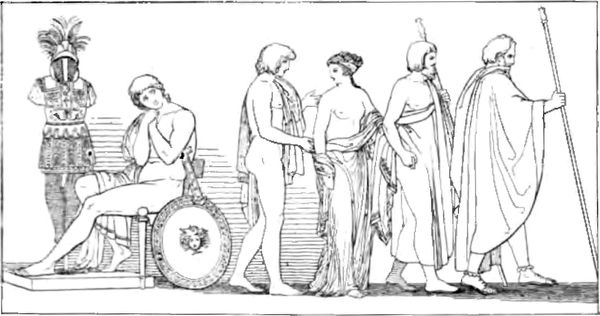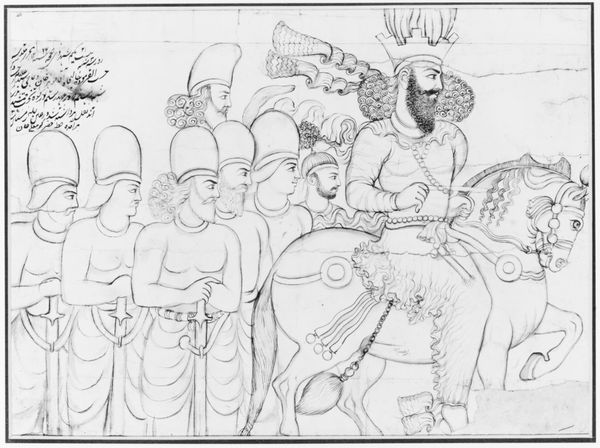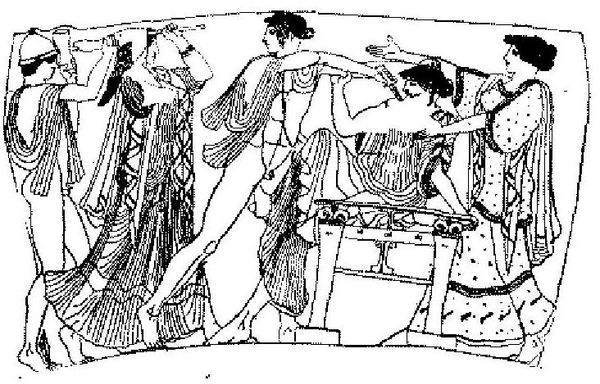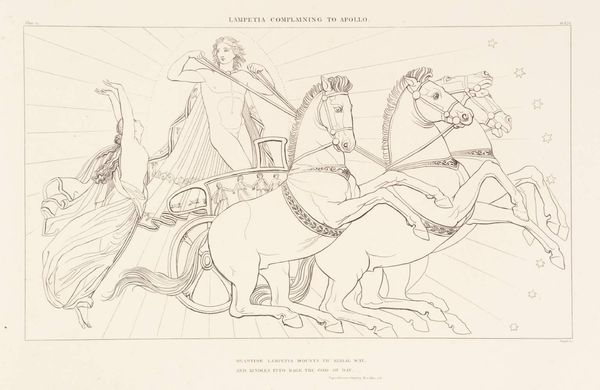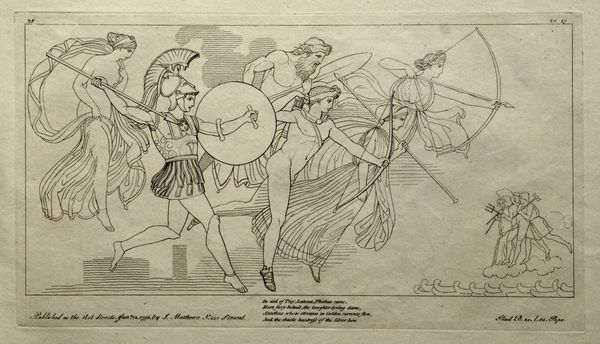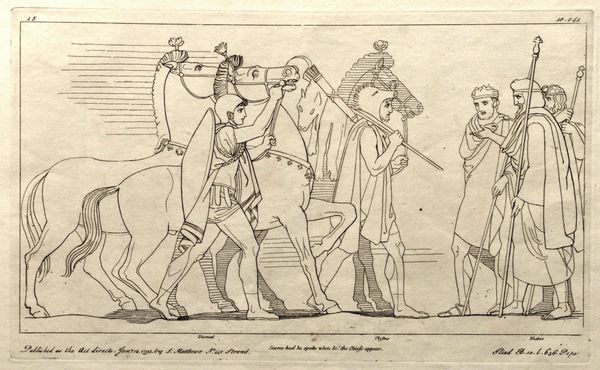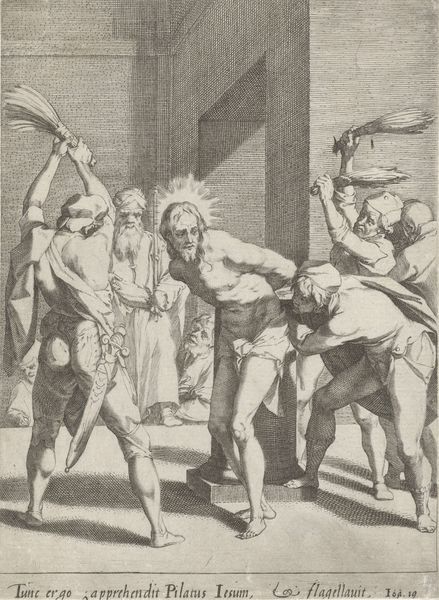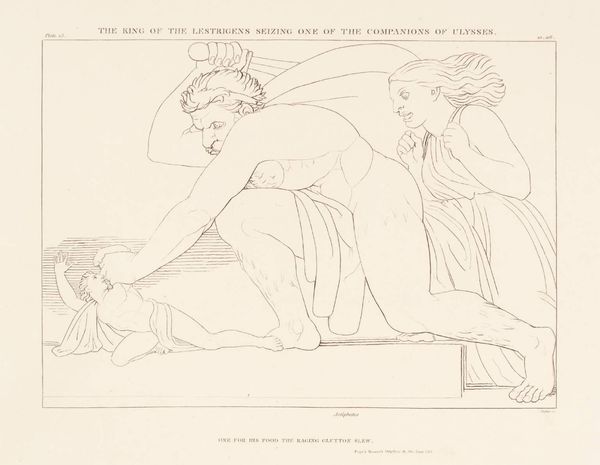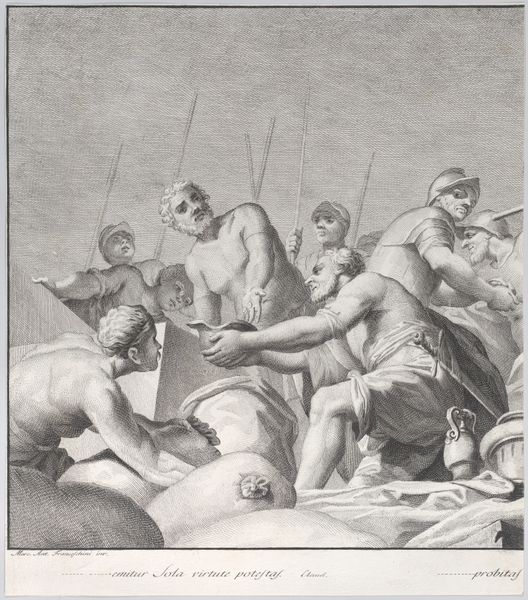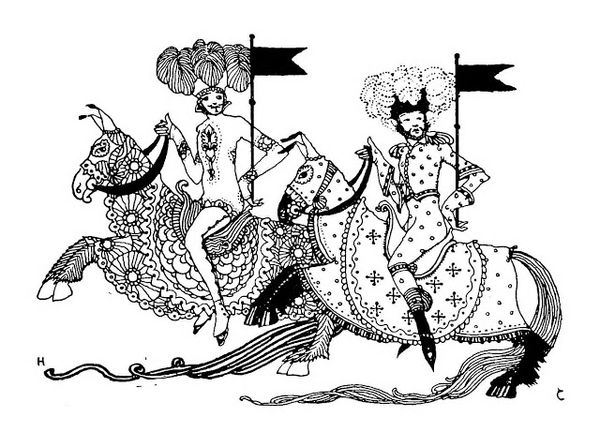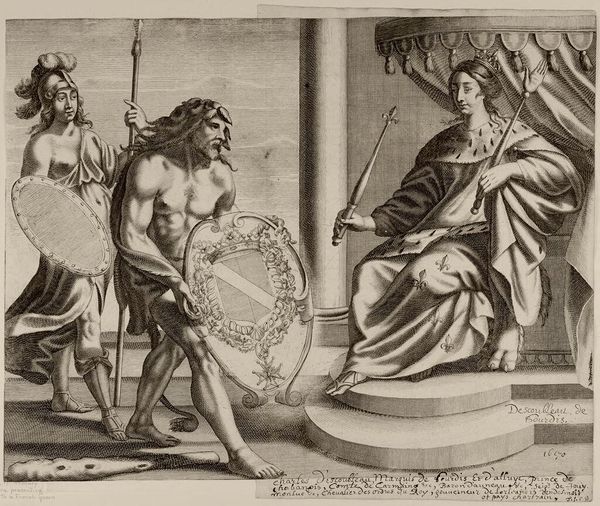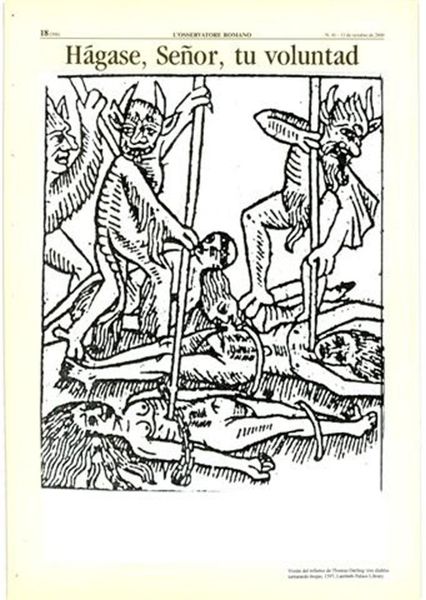
drawing, paper, ink
#
drawing
#
neoclacissism
#
narrative-art
#
figuration
#
paper
#
ink
#
ancient-mediterranean
#
line
#
history-painting
Copyright: Public domain
Curator: John Flaxman's 1795 pen and ink drawing, "The Fight for the Body of Patroclus, Illustration to the Iliad," offers a fascinating entry point into neoclassical aesthetics and its engagement with classical literature. Editor: You know, my first thought isn't of high art, but something like Greek pottery, all stark lines and storytelling, only... much darker. Curator: The drawing’s reliance on line indeed references archaic Greek art, and also mirrors the printmaking aesthetic becoming prominent in the late 18th century. Notice how the figures are defined by a deliberate, almost sculptural outline against the unadorned white paper. Flaxman reduces visual noise to achieve clarity. Editor: Exactly, and that reduction adds to the intensity. There’s this fierce tug-of-war for the fallen hero, all captured in these lean, almost frantic lines. That fallen body grounds the clean style into a very earthy moment of grief and aggression. Do you get that, or am I reading too much into some ink scratches? Curator: Not at all. Flaxman brilliantly juxtaposes the heroic ideal, suggested by the classical poses, with the brutal reality of war. The stylized grief of those fighting over Patroclus humanizes the scene, amplifying the tragedy inherent to the Iliad's narrative. Semiotically, the shields emblazoned with serpent and Gorgon imagery add further layers of protection and mythic terror to the composition. Editor: It’s pretty effective – the minimalist rendering feels surprisingly maximal with emotion. Those lean lines of those shields manage to radiate the heft and force, don't they? Curator: Precisely. Furthermore, the choice of monochrome underscores the universality and timelessness of the Homeric epic. Flaxman reduces the specifics of color and setting, which forces viewers to confront the essential elements of human conflict. Editor: And it all culminates in the simple power of raw human drama. You know, stripped down, the art forces you to ask the harder questions about the cost of heroism, I think. Curator: Indeed, Flaxman distills the epic into a stark meditation on mortality and the cost of conflict. Its visual restraint, paradoxical as it seems, is precisely what lends "The Fight for the Body of Patroclus" its enduring resonance. Editor: Definitely gives a person something to consider beyond neat lines, and to appreciate those neat lines more. Thanks.
Comments
No comments
Be the first to comment and join the conversation on the ultimate creative platform.

